- The world’s second known breeding population of Indochinese tigers (Panthera tigris corbetti) confirmed in Eastern Thailand’s Dong-Phayayen Khao Yai Forest Complex – a UNESCO World Heritage site.
- Remarkable discovery now makes Thailand home to two breeding populations of this tiger subspecies, a significant step toward ensuring their long-term survival in the wild.
- Thailand’s Department of National Parks, Wildlife and Plant Conservation (DNP) and conservation groups Freeland and Panthera have conducted a scientific survey on the tiger population using the ‘photographic capture-recapture’ method, indicating a density of 0.63 tigers per 100 square kilometers.
- While conservationists welcome these exciting new findings, they warn of the continued decline of tigers elsewhere in Thailand and across their global range.
Conservationists in Thailand and the country’s Department of National Parks, Wildlife and Plant Conservation (DNP) have released scientific findings today that confirm the existence of the world’s second breeding population of Indochinese tigers, and provided the first photographic evidence of tiger cubs in Thailand’s Eastern Forest Complex.
A camera trap survey conducted using the “photographic capture-recapture” method in the country’s eastern Dong Phayayen – Khao Yai Forest Complex (DPKY-FC) during 2016 has revealed a density of 0.63 tigers per 100 square kilometers (~1.63 tigers per 100 square miles ), confirmed a joint statement released today by the DNP, counter-trafficking organization Freeland and global wild cat conservation organization Panthera.
While the scientific data suggests an exceptionally low tiger density — on par with some of the most threatened tiger habitats in the world — the findings, “demonstrate the species’ remarkable resilience given wildlife poaching and illegal rosewood logging present in the Complex,” the statement said.
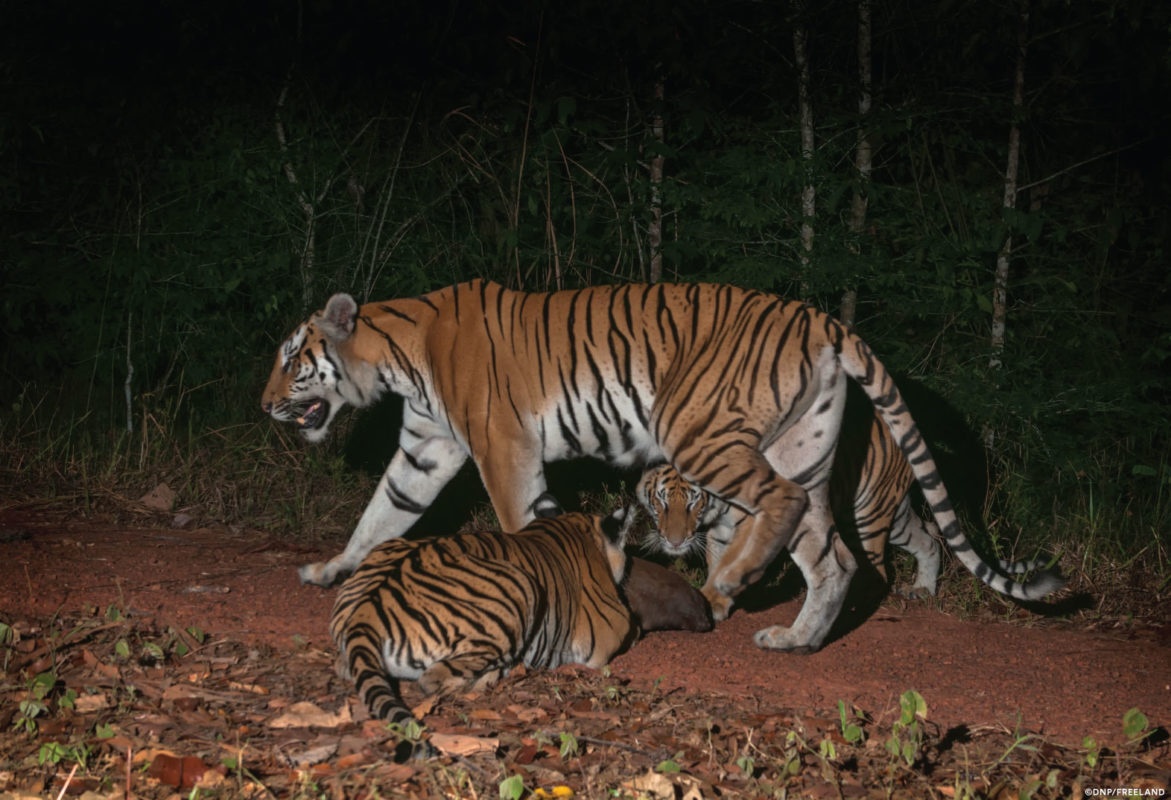
“The extraordinary rebound of eastern Thailand’s tigers is nothing short of miraculous,” said John Goodrich, one of the world’s leading tiger experts and Senior Tiger Program Director at Panthera. The new photographic evidence from the DPKY-FC of successful breeding of tigers is the first to surface in over fifteen years, and is a rare conservation win on the way to ensuring the magnificent cat’s long-term survival in the wild. Previously, Thailand was thought to house only one remaining viable breeding population of wild Indochinese tigers, in Huai Kha Khaeng wildlife sanctuary to the west of the country, which was reported to have 35 – 58 individuals as of February 2016. The discovery of this “new” population is the result of months monitoring with specifically-designed camera traps, and weeks of hard trekking through the forest by rangers and conservationists throughout 2016.
“The stepping up of anti-poaching patrols and law enforcement efforts in this area have played a pivotal role in conserving the tiger population by ensuring a safe environment for them to breed,” the Director of the National Parks Division of the DNP Songtam Suksawang said in the statement. “However, we must remain vigilant and continue these efforts, because well-armed poachers still pose a major threat.”
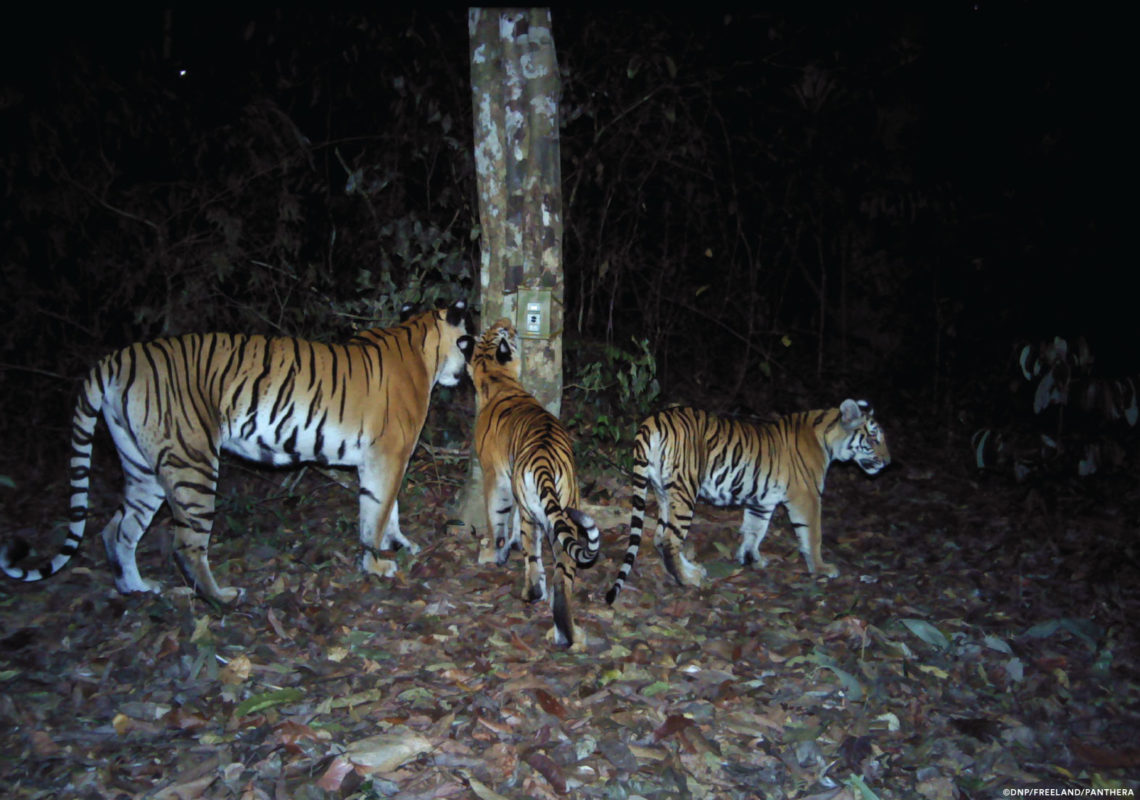
Listed as a UNESCO World Heritage site in 2005, the DPKY-FC is one of mainland Southeast Asia’s last contiguous tracts of forest providing adequate habitat for tigers. Thailand’s wild tiger populations have been driven to the brink of extinction chiefly due to habitat loss, rampant poaching, and overhunting of their prey animals. Fewer than 200 wild tigers are thought to remain in Thailand.
The remarkable evidence of breeding in the DPKY-FC bucks the trend of their continued decline elsewhere in the country, except in Huai Kha Khaeng wildlife sanctuary, where the present breeding population is largely due to a ramping up of protection efforts —including an intensive patrolling system — begun in 2005 by the Thai government. In other areas of suitable tiger habitat across Thailand, they have been gradually extirpated.

[quote_colored name=”” icon_quote=”no”]If wild tigers are permitted to go extinct, “it would be the largest carnivore to do so since the American lion (Panthera leo atrox) died out at the end of the Pleistocene, approximately 10,000 years ago,” John Vaillant wrote in “The Tiger.” [/quote_colored]
Worldwide, currently only an estimated 3,000-4,000 tigers remain in the wild, and according to IUCN they now inhabit less than 6 percent of their historical range, which once spanned from Turkey across Asia to Russia’s eastern coast. Listed as endangered on the IUCN Red List of Threatened Species, breeding populations of wild tigers were thought to exist in thirteen different countries as recently as 2006, but their continued sharp decline now sees them only in eight (Bangladesh, Bhutan, India, Indonesia, Malaysia, Nepal, Thailand and Russia). In 2011, the IUCN described the extent of the recent decline of the Indochinese subspecies as “serious” and “approaching the threshold of Critically Endangered.” If wild tigers are permitted to go extinct, “it would be the largest carnivore to do so since the American lion (Panthera leo atrox) died out at the end of the Pleistocene, approximately 10,000 years ago.” John Vaillant wrote in “The Tiger.”
2016 proved a significant year for tigers when conservation group WWF and the Global Tiger Forum announced in April that the world’s tiger population had finally shown an increase after “several decades of constant decline.” The WWF study estimated that in April 2016 there were an estimated 3,890 wild tigers worldwide, up from 3,200 in 2010, when the 13 tiger range countries announced an ambitious commitment to double tiger numbers by 2022. Several prominent tiger experts and scientists have however disputed the findings, claiming WWF’s report and its implications were “scientifically unconvincing.”
In the same month, the WWF declared tigers in Cambodia “functionally extinct” stating, “there are no longer any breeding populations of tigers left in Cambodia,” largely due to intensive poaching and continued deforestation of Cambodia’s tropical dry forest ecosystems. A reintroduction action plan that will be implemented by the Cambodian government and WWF was also launched last year.
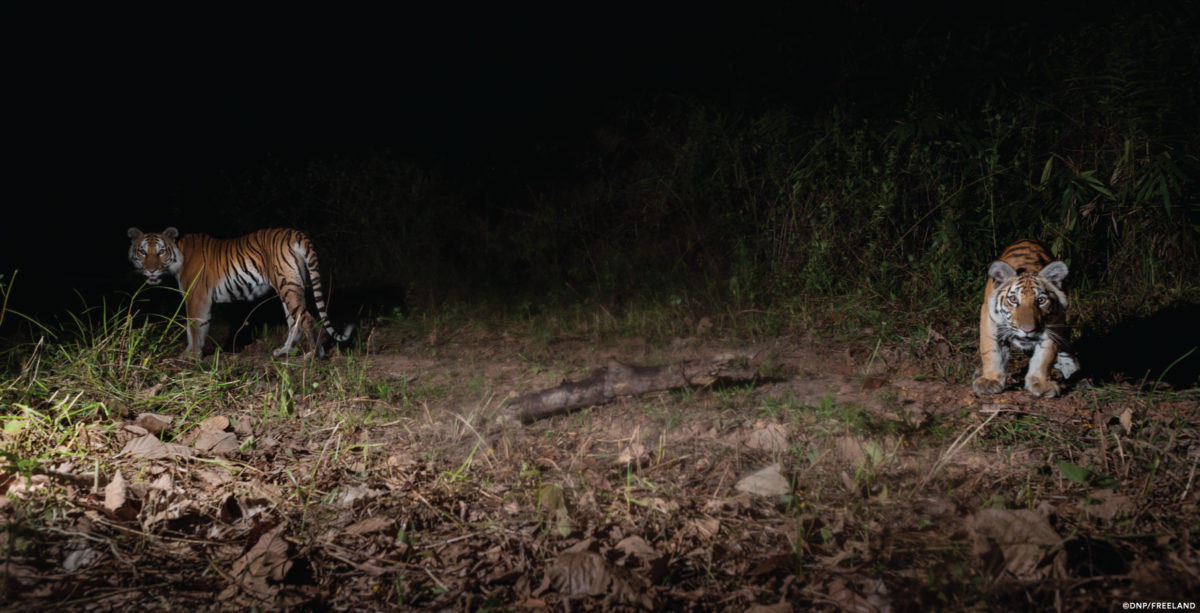
In Thailand, conservationists are concerned that as illegal Siamese rosewood logging rages on across the entire DPKY-FC, the illegal loggers increasingly pose a deadly threat to the freshly discovered wild tiger population. It is crucial to bolster protection for Thailand’s wild tigers, Kraisak Choonhavan, Freeland’s chairman of the board said in the statement released today, adding, “As long as the illegal trade in tigers continues, they will need protection. Counter-wildlife trafficking starts at the source.”
Thailand has ramped up protection for Siamese rosewood, in June 2015 the DNP formed an elite group of forest rangers called “Hasadin” specifically tasked with curbing the species’ rampant poaching and subsequent degradation of Thailand’s eastern forests. Across the DPKF-FC, officials are deploying new motion-sensor cameras that can send images in almost real-time to an email account, allowing them to keep track of multiple areas at once without having to deploy rangers to those locations.
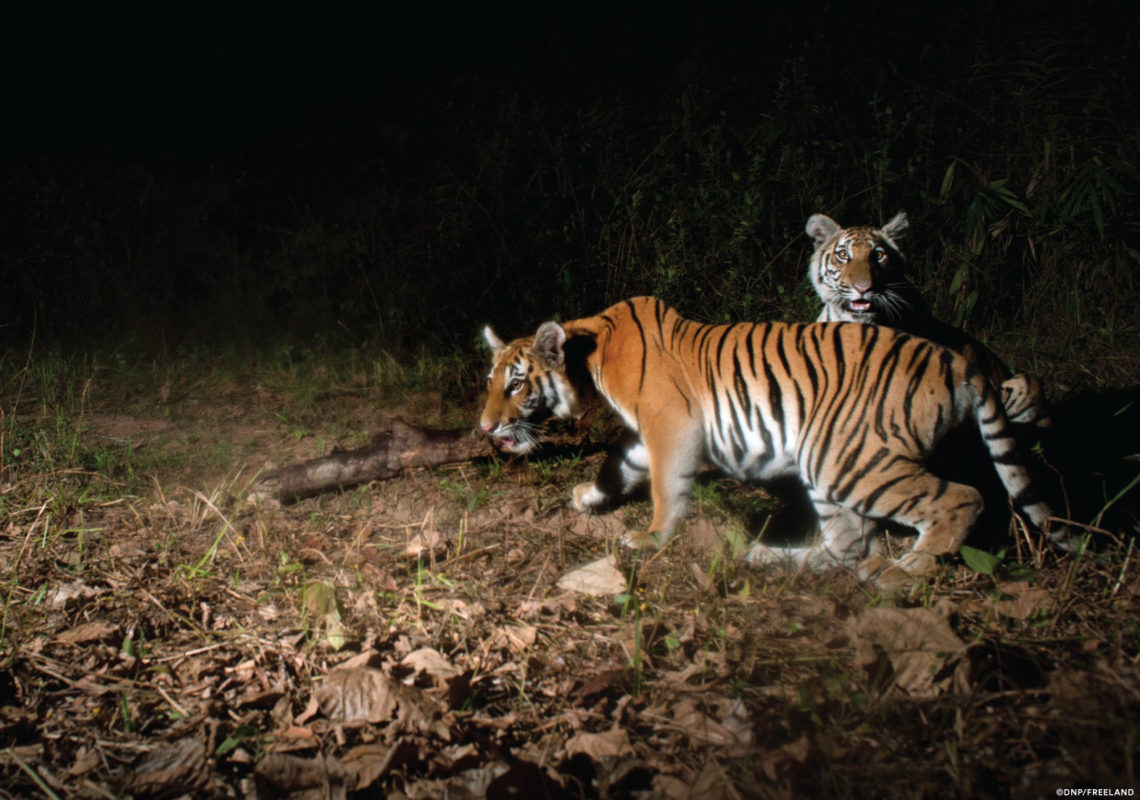
Keeping connectivity for tigers across Southeast Asia
Continued illegal logging, ongoing road expansion and encroachment within the Dong Phayayen-Khao Yai Forest Complex saw the World Heritage Committee warn of a potential downgrading of the complex to the “World Heritage in Danger List” in 2015. The Committee is expected to make a decision at its 41st session in July this year. The expansion of Highway 304 – a road that cuts through the DPKY-FC, running between Khao Yai and Thap Lan National Parks, is one of those threats that could lead to a reduction in tiger numbers and occupancy, destroying part of the treasured tiger landscape and affecting their ability to move around within remaining complex area.
Asia’s infrastructure development boom could lead to the creation of 11,000 new kilometers of roads and railways, causing “the unmitigated fragmentation and destruction” of tigers’ habitats and pushing them further to the brink of extinction in the wild, according to a report released by WWF last year. Maintaining strong connectivity between existing or potential habitats for the Indochinese tiger, and many other species that require large areas, such as the Asian elephant, is vital for those species’ long-term survival in an increasingly human-altered landscape.
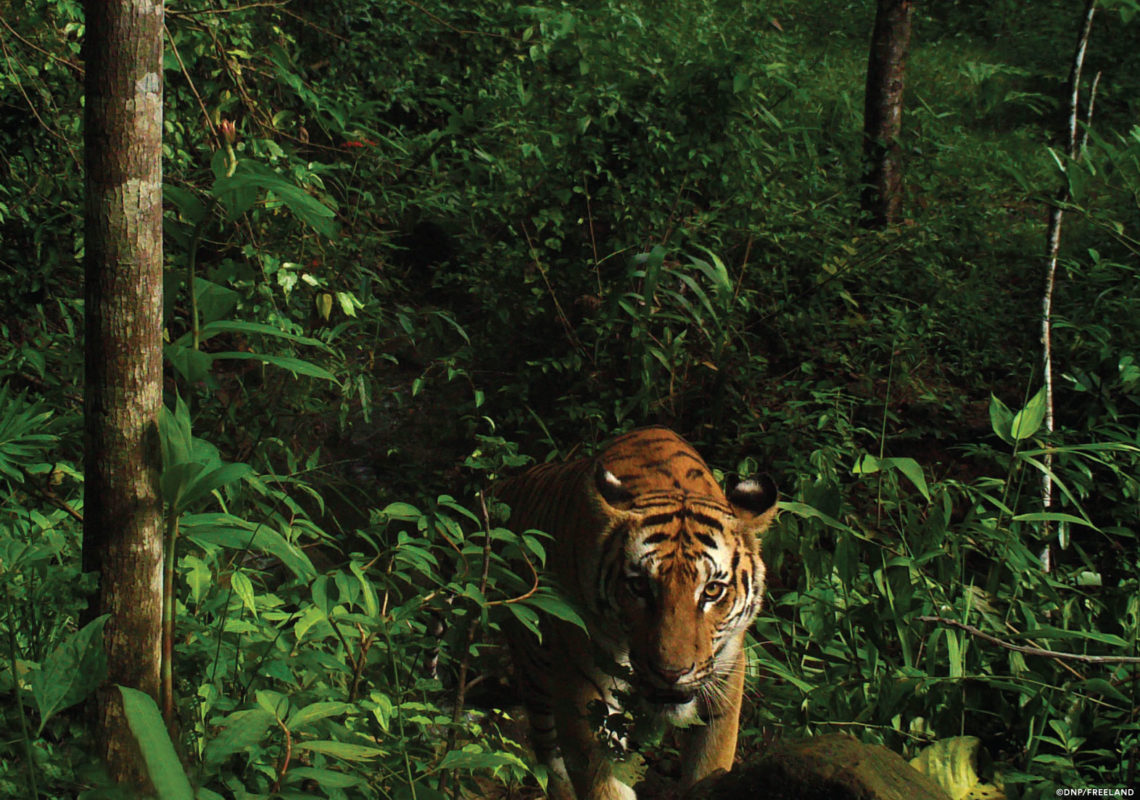
The planned construction of a major highway linking the Dawei Special Economic Zone in southeast Myanmar to southwest Thailand will bisect remaining forest habitat, home to Indochinese tigers. The highway will cut through a critical corridor running north-south that links up two of the most significant forest conservation landscapes containing key protected areas in tropical Southeast Asia, Thailand’s Western Forest Complex (WEFCOM) and the Kaeng Krachan Forest Complex. A report released in April 2016 by WWF outlines the key wildlife crossing sites to be preserved or planned along the Dawei highway, using species modeling based on existing camera trap data and expert knowledge of species movement behavior. Kaeng Krachan National Park (within the Kaeng Krachan Forest Complex) —at the southern end of the critical forest corridor — is the largest national park in Thailand at 2,914 square kilometers (1,125 square miles), and is a large swathe of forest habitat with the potential to provide a reintroduction site for tigers.
On today’s confirmation of the world’s second breeding population of Indochinese tigers, Goodrich said: “Thailand’s World Heritage Forest Complex is home to prime forested habitat that, with significant conservation resources, could support eight times as many tigers as it does now. With continued infiltration of rigorous anti-poaching protection, there is no doubt that this population can be fully recovered, burgeoning into a tiger stronghold and serving as a source of life and diversity for depleted tiger populations in Cambodia, Lao PDR and throughout the species’ range.”
FEEDBACK: Use this form to send a message to the author of this post. If you want to post a public comment, you can do that at the bottom of the page.